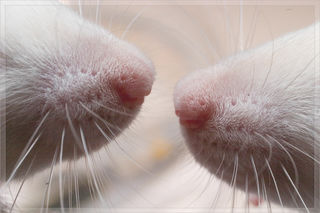Empathy
Empathy as a "Danger Antenna”
Rats’ sensitivity to the emotions of others might help them avoid peril.
Posted December 11, 2019 Reviewed by Gary Drevitch

Rats are social animals, exquisitely attuned to the emotions of the rats around them. In a new study published in PLoS Biology, researchers from the Netherlands Institute for Neuroscience show that rats may use this sense of empathy as a way to gauge danger.
Most studies of empathy conceive of it as a one-way phenomenon in which an observer “catches” the emotions of another. But in real life, it’s more of an interactive process in which information flows in two directions.
“Emotions develop in a social loop,” says neuroscientist Christian Keysers, lead author of the new study. For instance, when a child falls down, the parent reacts—either calmly or in a panic. The child looks to the parent and, based on his or her reaction, she might stand up and brush herself off or start sobbing.
Keysers and his colleagues scrutinized this social loop scientifically for the first time, using a paradigm that allowed them to capture social influences in two directions. They put two rats face to face and then startled one of them (the "demonstrator") with a brief electric shock to the feet. Then they observed the reactions of both rats. They found that the observer appears to “catch” the fear of the demonstrator, but the flow of information goes both ways: the reaction of the observer also influences how the shocked rat responds. Observers that were less scared reduced fear in the demonstrators.
Catching Fear
Remarkably, Keysers and his colleagues also found that empathy is independent from familiarity. For rats that did not know each other, the emotions of the other rat were as contagious as for rats that had shared the same home for five weeks.
This finding challenges our notions of the origin of empathy. If empathy is about caring for others, one might expect it to be stronger for people that are closer to us. The fact that familiarity had no effect on the transmission of emotion between rats suggests another interpretation.
Keysers says that their data suggest that an observer shares the emotions of others because it enables them to prepare for danger. “If emotional contagion is there to allow us to ‘use’ others as social antennae, through which we learn about our environment—where dangers lurk or where delicious foods might be found—then the information is equally valuable whether or not I care about the person that sent me that information,” he says.
Although familiarity with the demonstrator did not play a role in rats’ reactions, previous experience did. Rats that had previously experienced an electric shock demonstrated empathic fear when the demonstrator was shocked, but inexperienced rats barely reacted at all. In this way, rats are like humans: The more their experiences match those of others, the more they can empathize with what they feel.
Evolution of Empathy
In humans, witnessing the pain of others activates an area of the brain called the anterior cingulate cortex (ACC). This region is also active when we feel pain ourselves and is considered to be a key brain area involved in empathy.
Keysers and his colleagues temporarily deactivated the ACCs of rats to see what effect it would have on emotional contagion. They found that with their ACCs deactivated, the rats were no longer sensitive to the fear of another rat. “That the same brain region is necessary for emotional contagion in rats and involved in empathy in humans sheds light on the evolutionary continuity of empathy,” says Keysers. “Empathy in the wider sense, i.e., feeling what others feel, is deeply rooted in our biology.”

According to Keysers and his colleagues, the fact that rats getting shocks are calmed by bystanders that are calm and reinforced in their fear by fearful bystanders, plus that the effect is similar across familiar and unfamiliar rats, all aligns with the notion that rats seem to come to a joint danger assessment by taking each other’s behavior into account.
Evolutionarily, this makes sense: Encountering a predator is often deadly, so anticipating its arrival through sensitivity to the signals of others could be life-saving.
“The take-home message is that it makes sense for evolution to select those animals that catch the emotions of others because it prepares them to deal with upcoming threats,” says Keysers. “Empathy proper – i.e., feeling the distress of others while knowing that it is their distress – can then build upon this mechanism.
“Empathy is then a side-effect of a selfish motive to detect dangers.”
References
Han, Y., Bruls, R., Soyman, E., Thomas, R. M., Pentaraki, V., Jelinek, N., Heinemans, M., Bassez, I., Verschooren, S., Pruis, I., Van Lierde, T., Carrillo, N., Gazzola, V., Carrillo, M., and Keysers, C. 2019. Bidirectional cingulate-dependent danger information transfer across rats. PLOS Biology 17(12): e3000524. Doi: 10.1371/journal.pbio.3000524.




